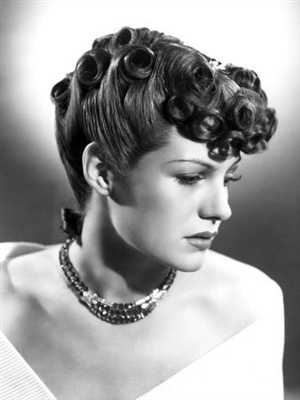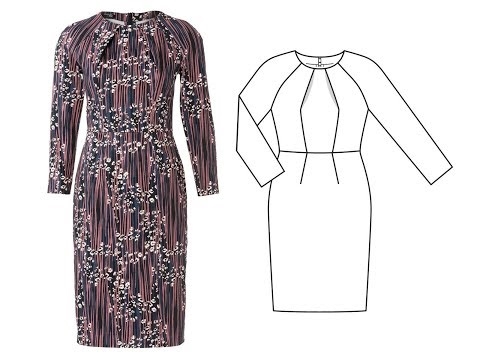Share
Pin
Tweet
Send
Share
Send
Prices for designer clothes and accessories are constantly growing. However, often, the most expensive things are in great demand. What is the matter?
“Look, isn't that cute?”
- Bag Birkin? Truth? After all, this is not your style!
- The point here is not in style, but in what it personifies.
“Yeah, she personifies the $ 4,000 you have to pay for her.”
- That's it. When I wear it, I will know that I can afford it. It would seem that 4000 for a bag is expensive. Nothing of the kind: today, prices for a mid-size leather model start at $ 9,000. Birkin was designed and named after British actress Jane Birkin, and is now one of the most expensive and coveted accessories in the world.
 For many years, prices for designer clothes, shoes and accessories have been growing rapidly. For example, a classic Chanel 2.55 bag in 2005 cost $ 1,650, and today - $ 3,950. Manolo Blahnik boats cost $ 485 ten years ago, and today - 755. Prices rose by about 56%.
For many years, prices for designer clothes, shoes and accessories have been growing rapidly. For example, a classic Chanel 2.55 bag in 2005 cost $ 1,650, and today - $ 3,950. Manolo Blahnik boats cost $ 485 ten years ago, and today - 755. Prices rose by about 56%.What is happening with the fashion industry? How could it happen that classic models that look the same as 10 years ago now cost 2–3 times more? Why are ready-made clothing lines already catching up with Haute Couture?
 First of all, inflation. It affects luxury products in the same way as other consumer goods. But this is not the only reason why such a fast pace of price growth. Hermès does not like to talk about this topic at all, and Chanel explain the situation by changing prices for supplies of fabric and other materials, as well as currency fluctuations. In truth, the high cost of materials is a favorite excuse for luxury brands.
First of all, inflation. It affects luxury products in the same way as other consumer goods. But this is not the only reason why such a fast pace of price growth. Hermès does not like to talk about this topic at all, and Chanel explain the situation by changing prices for supplies of fabric and other materials, as well as currency fluctuations. In truth, the high cost of materials is a favorite excuse for luxury brands.This is partly true. Prices for materials such as cotton or leather have indeed risen in recent years. This led to the fact that many labels began to merge with their suppliers. For example, both Chanel and Hermès bought tanneries last year. And LVMH invested heavily in a crocodile farm in Australia, thus providing itself with resources for the manufacture of bags and shoes.
Salary costs are also rising, and especially in Asia. For example, in China, wages have doubled over the past ten years, which, of course, could not but affect the cost of production of luxury brands. Another point in pricing is the cost of advertising and constantly increasing the cost of renting premises in prestigious areas. However, even all these reasons in the aggregate are not the basis for such high prices for products.
So what is the buyer paying for?
Firms need to somehow smooth out ever-increasing costs and in one way or another achieve the highest gross profit (profit after deducting the cost of production). For luxury brands, this profit is about 65% of the retail price. Unlike the mass market, pricing in the luxury segment does not depend on production costs, but on how much the customer is willing to pay. Luxury brands raise prices simply because they can afford it. After all, people are willing to pay. Designer things have never been so expensive in history, and at the same time, demand for them has never been so high. For example, Phoebe Fileau, having come to the post of creative director of Céline, made the brand one of the most expensive, where a handbag for $ 4,000 is the norm.
 For many, prices do not matter. And often a thing is bought just because it is expensive. In our minds, price is inextricably linked to quality and status.The higher the price, the more desirable the thing becomes. But, of course, not just because of prices, but because of the moment of exclusivity. Céline's strategy, for example, is based on just that. Items from the collection cannot be ordered online, and new models are rarely seen on display windows, because, as a rule, by the time they reach the store, they are all sold out. But no one has canceled the competition, so the uniqueness of the product greatly affects pricing. The best example is a Louis Vuitton monogram bag, which has always cost more than a thousand dollars, but at some point every second girl could see it.
For many, prices do not matter. And often a thing is bought just because it is expensive. In our minds, price is inextricably linked to quality and status.The higher the price, the more desirable the thing becomes. But, of course, not just because of prices, but because of the moment of exclusivity. Céline's strategy, for example, is based on just that. Items from the collection cannot be ordered online, and new models are rarely seen on display windows, because, as a rule, by the time they reach the store, they are all sold out. But no one has canceled the competition, so the uniqueness of the product greatly affects pricing. The best example is a Louis Vuitton monogram bag, which has always cost more than a thousand dollars, but at some point every second girl could see it.Why did this happen to Louis Vuitton? But because the leather goods the brand specialized in were no longer unique. Louis Vuitton has been stepping up its sales for many years, but has stalled in development. As a result, in 2013, prices for the monogrammed line were increased by 12% and new models were developed, the cost of which starts at $ 2,800. So the brand has achieved that its models have ceased to flicker on every corner.
This is the eternal dilemma of luxury brands: how to maintain a millionth profit while remaining an exclusive product? The solution is high prices. The so-called Veblen effect: the higher the price of a product, the higher its level of consumption. Because when buying something expensive, inaccessible to the majority, a person emphasizes his status and social significance.
 But still luxury things should not be prohibitively expensive. For example, the British brand Mulberry has long been successful thanks to its It-Bags, which were affordable and at the same time showed high quality. When the brand increased prices, trying to get on par with expensive companies, it scared away its regular customers. Trading figures fell sharply, and with them the price of shares in the company. Mulberry CEO Bruno Guillon was forced to resign, and Godfrey Davis, who succeeded him, decided to return to a strategy that once brought the company success. Mulberry was known as the “affordable suite,” and this segment certainly has great potential. After all, keeping up with high prices in the luxury segment is quite difficult.
But still luxury things should not be prohibitively expensive. For example, the British brand Mulberry has long been successful thanks to its It-Bags, which were affordable and at the same time showed high quality. When the brand increased prices, trying to get on par with expensive companies, it scared away its regular customers. Trading figures fell sharply, and with them the price of shares in the company. Mulberry CEO Bruno Guillon was forced to resign, and Godfrey Davis, who succeeded him, decided to return to a strategy that once brought the company success. Mulberry was known as the “affordable suite,” and this segment certainly has great potential. After all, keeping up with high prices in the luxury segment is quite difficult.The conclusion is that fashion lovers are not afraid of prices that are three to four times too high. There are 1,645 billionaire billionaires in the world, more than ever. This motivates the labels to a constant increase in prices.
So everyone must decide for himself whether to give thousands and thousands for the joy of owning a unique thing.
Photo: style.com, welt. de
Photos from the collections of Prada, Dolce & Gabbana, Celine, Hermes, Michael Kors, Chanel, Louis Vuitton
Material prepared by Dariya Ulumbekova.
Normal0falsefalsefalseRUX-NONEX-NONE / * Style Definitions * / table. MsoNormalTable {mso-style-name: "Plain table"; mso-tstyle-rowband-size: 0; mso-tstyle-colband-size: 0; mso-style-noshow: yes; mso-style-priority: 99; mso-style-parent: ""; mso-padding-alt: 0cm 5.4pt 0 cm 5.4pt; mso-para-margin-top: 0cm; mso-para-margin-right: 0cm; mso-para-margin-bottom: 8.0pt; mso-para-margin-left: 0cm; line-height: 107%; mso-pagination: widow-orphan; font-size: 11.0pt; font-family: "Calibri", "sans-serif"; mso-ascii-font-family: Calibri; mso-ascii-theme-font: minor-latin; mso-hansi-font-family: Calibri; mso-hansi-theme-font: minor-latin; mso-fareast-language: EN-US;}
Share
Pin
Tweet
Send
Share
Send














